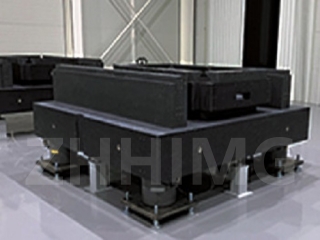Semiconductor devices have become ubiquitous in modern technology, powering everything from smartphones to electric vehicles. As the demand for more efficient and powerful electronic devices continues to increase, semiconductor technology is constantly evolving, with researchers exploring new materials and structures that can offer enhanced performance. One material that has recently been gaining attention for its potential in semiconductor devices is granite. While granite might seem like an unusual choice for a semiconductor material, it has several properties that make it an attractive option. However, there are also some potential limitations to consider.
Granite is a type of igneous rock that is composed of minerals including quartz, feldspar, and mica. It is known for its strength, durability, and resistance to wear and tear, making it a popular building material for everything from monuments to kitchen countertops. In recent years, researchers have been exploring the potential of using granite in semiconductor devices due to its high thermal conductivity and low thermal expansion coefficient.
Thermal conductivity is the ability of a material to conduct heat, while thermal expansion coefficient refers to how much a material will expand or contract when its temperature changes. These properties are crucial in semiconductor devices because they can affect the efficiency and reliability of the device. With its high thermal conductivity, granite is able to dissipate heat more quickly, which can help prevent overheating and prolong the lifespan of the device.
Another advantage of using granite in semiconductor devices is that it is a naturally occurring material, which means it is readily available and relatively inexpensive compared to other high-performance materials such as diamond or silicon carbide. Additionally, granite is chemically stable and has a low dielectric constant, which can help reduce signal losses and improve overall device performance.
However, there are also some potential limitations to consider when using granite as a semiconductor material. One of the main challenges is achieving high-quality crystalline structures. Since granite is a naturally occurring rock, it can contain impurities and defects that can affect the electrical and optical properties of the material. Furthermore, the properties of different types of granite can vary widely, which can make it difficult to produce consistent, reliable devices.
Another challenge with using granite in semiconductor devices is that it is a relatively brittle material compared to other semiconductor materials such as silicon or gallium nitride. This can make it more prone to cracking or fracturing under stress, which can be a concern for devices that are subject to mechanical stress or shock.
Despite these challenges, the potential benefits of using granite in semiconductor devices are significant enough that researchers are continuing to explore its potential. If the challenges can be overcome, it is possible that granite could offer a new avenue for developing high-performance, cost-effective semiconductor devices that are more environmentally sustainable than conventional materials.
In conclusion, while there are some potential limitations to using granite as a semiconductor material, its high thermal conductivity, low thermal expansion coefficient, and low dielectric constant make it an attractive option for future device development. By addressing the challenges associated with producing high-quality crystalline structures and reducing brittleness, it is possible that granite could become an important material in the semiconductor industry in the future.
Post time: Mar-19-2024

